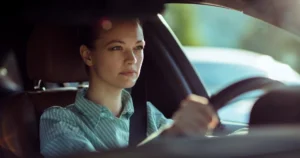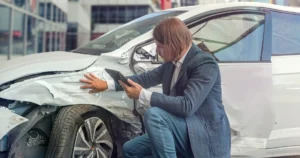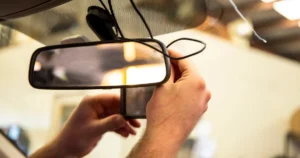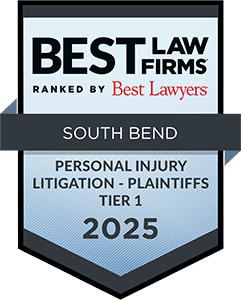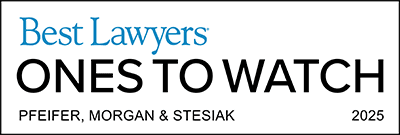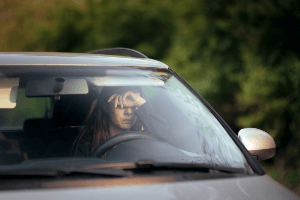 Single-vehicle accidents can result in injuries to a driver and his or her passengers. If you were injured in one of these accidents, you might be wondering how to recover compensation for your damages.
Single-vehicle accidents can result in injuries to a driver and his or her passengers. If you were injured in one of these accidents, you might be wondering how to recover compensation for your damages.
Let our knowledgeable South Bend car crash attorneys help you through the process of filing a claim and proving someone else’s liability for your damages. We do not charge you anything while we work on your case, and there are no fees unless we win.
Below, we discuss who may be liable for a single-vehicle accident and what your options may be for recovering compensation.
What Are the Common Causes of Single-Vehicle Accidents?
When a vehicle crashes into a tree, median, barrier or some other stationary object it is known as a single-vehicle accident. These types of crashes can occur if a driver loses control of his or her vehicle and slams into an inanimate object. Usually, this happens when a driver is:
- Drowsy
- Speeding
- Distracted
- Driving under the influence
Drivers may also lose control of their vehicles when weather conditions are bad and the roads more dangerous. For instance, when driving during a heavy rainstorm, when it is snowing or if there is black ice on the road.
Sometimes, single-vehicle accidents are caused by something outside the driver’s control, such as an unexpected road hazard. Common road obstructions include potholes, animals or road debris.
Another type of single-vehicle accident may involve a driver in a “phantom vehicle.” This term refers to crashes that are not caused by any physical contact with another vehicle. Instead, the driver of the phantom vehicle typically performs some sort of negligent maneuver that hinders another driver, like suddenly cutting the car off. This behavior may cause that other drivers to swerve to avoid a collision with the phantom vehicle. However, while swerving to avoid one crash, the driver sometimes ends up colliding with a tree, median or another fixed object instead. The “phantom” driver is the negligent driver who did not stop after his or her actions led to a crash. However, since that vehicle has suffered no damage, it is difficult to catch the person responsible for the crash.
Who May Be Liable for a Single-Vehicle Accident?
Determining liability for a single-vehicle accident may be more complex than if another vehicle were involved. Especially if the crash was caused by another driver who fled the scene. However, there are certain factors that could help establish liability for these types of crashes.
As in most injury cases, it is important to establish whose negligence may have led to the crash. If you were injured in a single-vehicle accident caused by a phantom vehicle, then liability for your injuries may fall to the driver of that vehicle. However, you still need to prove you did not lose control of the vehicle due to your own negligence. Evidence for a phantom vehicle crash could include:
- Dashcam footage
- Traffic camera/surveillance video
- Witnesses
If you were injured as a passenger in a single-vehicle accident, the driver may be liable for your damages if his or her negligence caused the crash.
When a single-vehicle accident is the result of cargo falling from another vehicle, the driver or owner of that vehicle could be liable for your damages. However, you would still need to be able to link the object back to the vehicle it fell from.
A government entity may also be liable for your damages resulting from poorly maintained roads.
What Are My Options for Pursuing Compensation for a Single-Vehicle Accident?
After establishing liability for your single-vehicle accident, you may have several legal options for pursuing compensation:
- Filing a liability insurance claim – if you were a passenger in a vehicle whose driver acted negligently and crashed.
- Filing a tort claim against a government municipality – for accidents when a government entity’s failure to maintain reasonable upkeep of a road resulted in a crash.
- Filing a homeowner’s insurance claim – you may be able to pursue compensation from a negligent homeowner whose pet ran into the road.
- Filing a claim through your own insurance – in cases of accidents where liability falls to an outside factor that cannot be identified, like a phantom vehicle or even wildlife, you may still have the option to recover compensation from your own Uninsured/Underinsured Motorist (UM) coverage or Personal Injury Protection (PIP).
UM and PIP are both optional insurance add-ons in Indiana. These coverages are meant to help cover your economic damages, like medical bills and lost wages, when you are not the at-fault party in an accident. As for damage to your vehicle, your comprehensive or collision coverage may also cover the costs of repairing or replacing your vehicle.
Call an Experienced Attorney Today
Single-vehicle accidents can be complex and often require an extensive investigation to determine who may be liable for your damages. Even after establishing liability, the injured victim needs to build a strong case to prove that party’s negligence.
Our attorneys have decades of experience managing accident claims, and we have successfully recovered millions on behalf of our clients.
We offer a free consultation to discuss your case and see how we may be able to help you.
Call (574) 444-0741 to get started.

